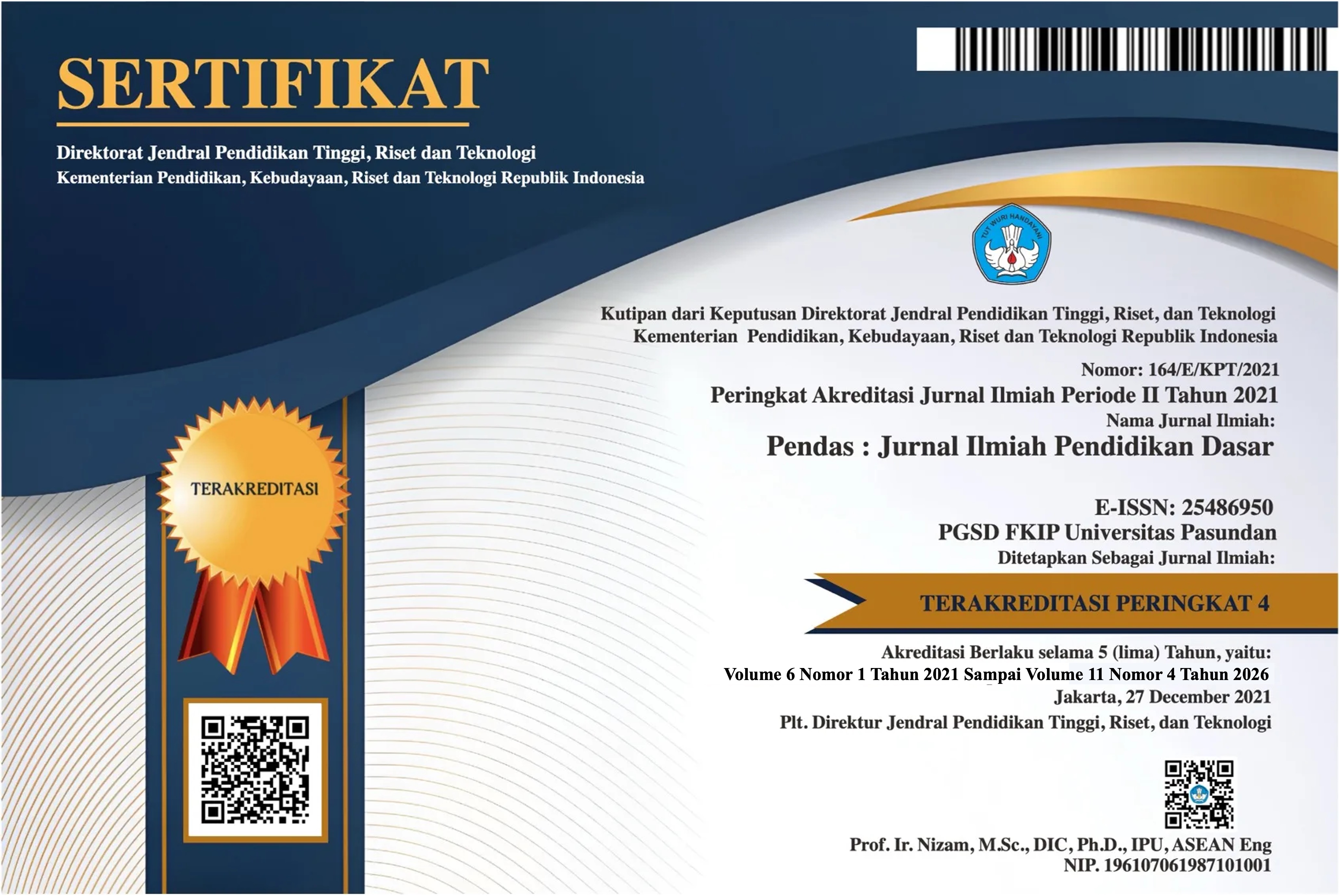PERAN EMOSI POSITIF PADA SISWA MENGGUNAKAN TEKNIK POSITIVE REINFORCEMENT PERSPEKTIF NEUROSAINS
DOI:
https://doi.org/10.23969/jp.v9i2.14209Keywords:
positive emotions, positive reinforcement, neuroscinceAbstract
This study reviewed the role of positive emotions in elementary school students that can be used to optimize the use of positive reinforcement techniques in learning. The research method used is the study of libraries using a qualitative approach. Methods of data collection related to theoretical surveys and references related to cultures, values, and norms relevant to the situation being studied. Data collection method using electronic books, scientific journals, and other scientific literature. In the context of neuroscience, positive emotions of students can affect the activity and balance of the limbic system, including parts of the brain that are associated with emotions, motivation, and learning. Positive emotions have a beneficial effect on the nerve pathways involved in mood regulation, motivation and cognitive function. A good mood such as being happy, confident, proud, building a positive learning environment can be formed from a variety of positive reinforcement techniques that teachers give to students. The use of this positive reinforcement technique is able to highlight the motivation, and student learning achievement because this technique can cultivate positive emotions of students.
Downloads
References
Anis Syifaul Qolbiyah, & Eka Ismaya Indra Purnamanita. (2022). Teori Pemrosesan Informasi dan Neurosains dalam pengembangan Metodologi Pembelajaran Pendidikan Agama Islam. Eduatif:Jurnal Ilmu Pendidikan , 4.
Apri Wulandari. (2019). Pengembangan Emosi Positif Dalam Pendikan Islam Perspektif Neurosains. Tadrib, V.
Diponegoro, A. M., Rohaeni, E., Universitas, F. P., Dahlan, A., Diastu, N. R., Ali, K., & Marsha, G. C. (2020). Peran Emosi Positif pada Guru Pembimbing Khusus di Masa Pandemic Covid-19 Ayu Meryka Santoso Endah Siti Nurjannah. Prosising Seminar Nasional Magister Psikologi Universitas Ahmad Dahlan, 1–7.
Iyulen Pebry Zuanny. (2020). Tinjauan Pandemi Covid-19 dalam Psikologi Perkembangan ( marty M. H. N. A. Riana Sahrani, Ed.). Syiah Kuala University.
Jin Wan, Kun ting Pan, Yuan Peng, & Ling qiang Meng. (2022). The Impact of Emotional Leadershipon Subordinates’ Job Perfomance: Meditation of Positive Emotional and Moderation of susseptibility to Positif Emotions. Frontiersin Psychology.
Karina Kandhi Krisnawardhani. (2020). Teknik Penguatan Positif sebagai Media untuk Meningkatkan Kemampuan Interaksi Sosial pada Remaja dengan Skizofrenia Hebefrenik. Proceedings of The ICECRS.
Mega Citrandini. (2016). Emosi Akademik, Strategi Belajar, Dan Prestasi Akademiksiswa Sma Di Wilayah PerdesaaN. 9.
miftah ulya. (2019). Emosi Positif Manusia Perspektif Al-Qur’an.
Nurul Azmi. (2015). Potensi Emosi Remaja dan Pengembangannya. Sosial Horizontal, 2.
pengembangan emosi positif. (n.d.).
Permata Sari. (2022). Reinforcement positif : Teknik untuk Meningkatkan Academic Engagement Siswa pada Pandemi Covid-19. Bulletin of Counseling and Psychotherapy, 4.
Sugiyono. (2014). Metode Penelitian Kuantitatif Kualitatif Dan R&D. Alfabeta.
Suyadi. (2020). Pendidikan Islam dan Neurosains Menelusuri Jejak dan Otak dalam Al-Qur’an Hingga Pengembangan Neurosains dalam Pendidikan Islam. Prenada Media.
Wulandari, A. (2019). Pengembangan Emosi Positif Dalam Pendikan Islam Perspektif Neurosains. 5.
Yayan Alpian. (2019). Pentingnya Pendidikan Bagi Manusia. Jurnal Buana Pengabdian, 1.
Downloads
Published
Issue
Section
License
Copyright (c) 2024 Pendas : Jurnal Ilmiah Pendidikan Dasar

This work is licensed under a Creative Commons Attribution 4.0 International License.



















